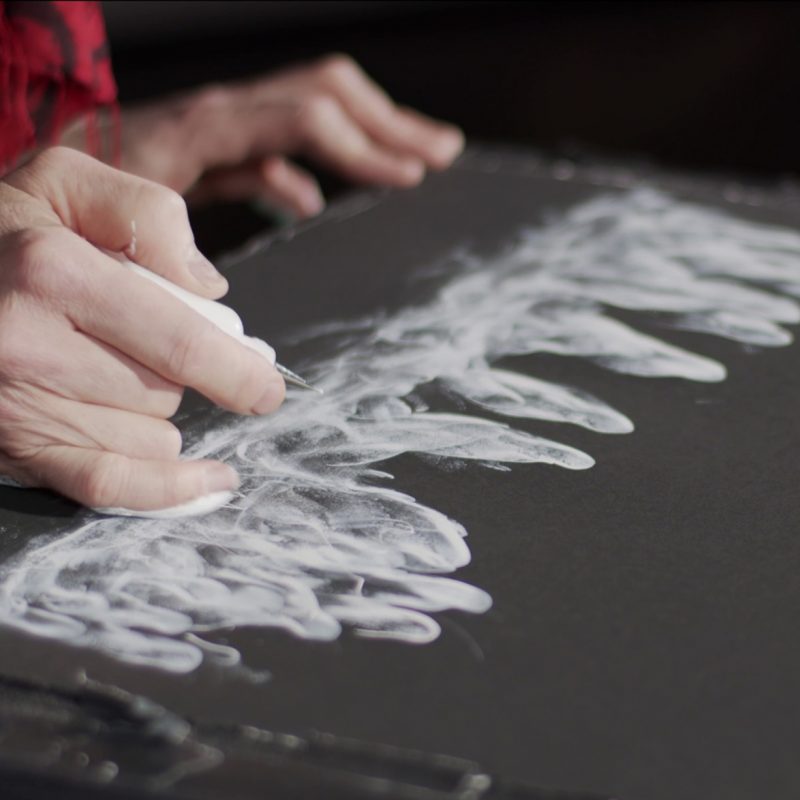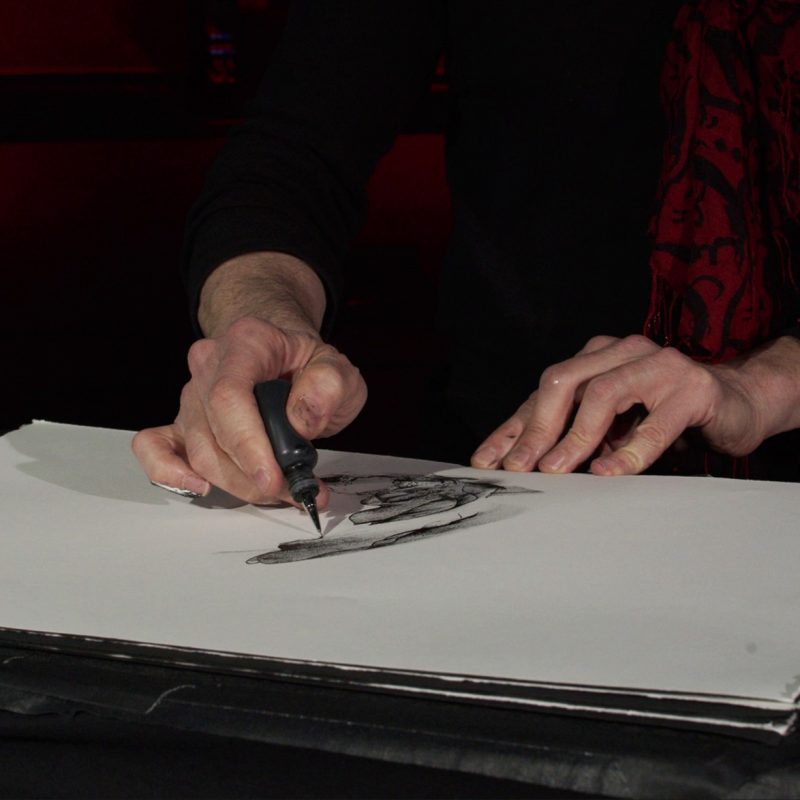- News
- Layers of Home Within
Layers of Home Within
Silkroad Ensemble’s Home Within combines instrumental music, electronics, and live illustration to create a moving account of ‘home,’ exploring specific moments in Syria’s recent history. Learn more about artists Kinan Azmeh and Kevork Mourad and the different layers that contribute to their collaborative project.
What can art do in a crisis? It’s a question that occupies any thoughtful creator and engages many of us right now. It is also a question that spurred the bravely personal multimedia collaboration between Syrian composer and clarinetist Kinan Azmeh and Syrian-Armenian visual artist Kevork Mourad—both members of the Silkroad Ensemble founded by Yo-Yo Ma.
Hoping to show solidarity with friends and family still living in Syria following the 2011 uprisings, Azmeh and Mourad released the short video “A Sad Morning, Every Morning” in March 2012, referencing the familiar feeling of preparing oneself for the daily arrival of bad news.
This short project would eventually become the cornerstone of Home Within – a full-length impressionistic reflection on the Syrian revolution and the meaning of home. Layering context, experience, visuals, and music, the duo discovers a response to tragedy while exploring notions of home, empathy, and hope.

Layer One: Context
A many-sided, armed conflict with social and political consequences echoing around the world constitutes a crisis. Ongoing since the spring of 2011, the Syrian civil war has had a devastating toll on the country’s citizens. Kinan Azmeh was one of many impacted early in the crisis when he was unable to return home to Syria from New York City. Caught again in the middle of political tensions in 2017, the musician found himself unable to return to his NYC home from a tour, due to the United States’ recently introduced travel bans. This undermining of compassion, mobility, and home is one particularly salient symptom of this multi-faceted crisis.
To Azmeh, the situation called out for a response. Having no solution, he put down his clarinet for a year.

Layer Two: Experience
It is in our nature to connect with art that speaks from personal experience. The influence of inherited and lived experience is present in Kevork Mourad’s work, with much of it inspired by themes of displacement, migration, and “the area that exists between cultures.” As an artist with Armenian and Syrian background, Mourad has a personal connection to the struggle many face to carry “home” with them to a new location. In one form or another, we all need a home. The search for place, security, and reliable identity holds a universal relevance and contributes to the deep impact of Mourad’s work.
Home Within goes beyond Azmeh and Mourad’s personal encounters with these concepts, offering solidarity with friends and family who still live in Syria by foregrounding a personal feeling of helplessness and dread that is both specific to the Syrian civil war and universally transferrable. These layers of experience begin to carve out entry points for more people to connect with the themes of the work.
"I hope sometimes when I play, that maybe the music will make people think “what can we do right now?"
Kinan Azmeh in conversation with Yo-Yo Ma (Silkroad)

Layer Three: Visuals
Mourad’s visuals themselves are layered. As much of our lives are the sum of our previous experiences, Mourad’s visuals are built up by overlaying physical materials to create what seems on first glance to be a cohesive whole. We can see each layer as an experience which, as time passes, drifts into memory. The memories that we carry into the future – like the layers in a work of art – become part of us, so it is only upon learning about someone’s journey that we can begin understand why they are who they are.
While rarely deemed essential, art does play an essential role in uniting people. With the many deep-seated commonalities that we share as human beings, learning about someone’s experiences through their art can mean building bridges of understanding. Swept up in Mourad’s visual musings on the concept of home, what shades of empathy might develop?


Layer Four: Music
When Kinan Azmeh picked up his clarinet again, he felt he had a responsibility – to himself – to speak up. Music is a voice. Azmeh will be the first to acknowledge the limitation of his instrument – a piece of music does not stop a bomb from falling or feed the hungry, he says. Nevertheless, music can make people think. It can break silence and prompt those listening to find their own voice.
Music is also a strong memory trigger. It can remind us of the home we carry with us – of feelings of empathy, belonging, and what it is to care for the people around us. Music is an expression of freedom. In the face of violence, we can continue working on our piece of the puzzle even more passionately.
“I felt that I owed it to myself to keep my voice loud. If the whole uprising was about people expressing themselves, I felt I owe it to myself actually to really speak up, believing in the freedom that music making is about.”
Kinan Azmeh (Silkroad)

Home Within taps into the natural optimism that keeps us going despite uncertainty and accumulated loss. When an original, physical home is out of reach, we can carry our own sense of home. If we do that, we expand the radius of who we are responsible for. With the help of art built from layers of human experience, how far might this radius expand?
Don’t miss the Dot Com Series presentation of Silkroad Ensemble: Home Within, streaming April 23 – May 31, 2021.

